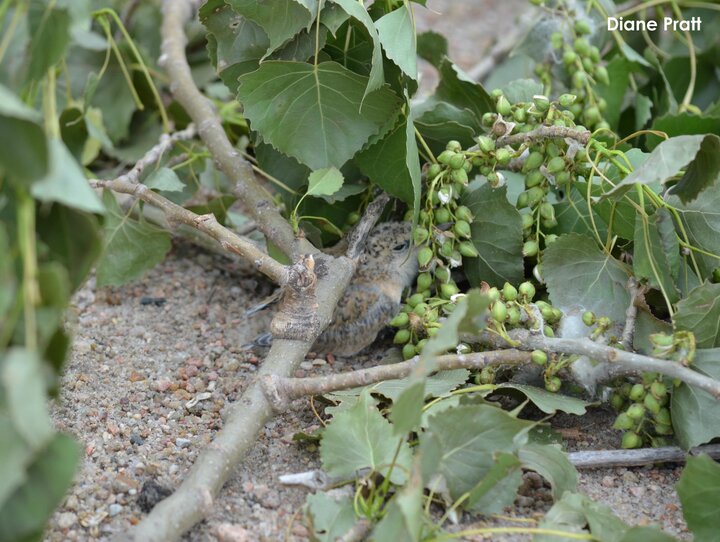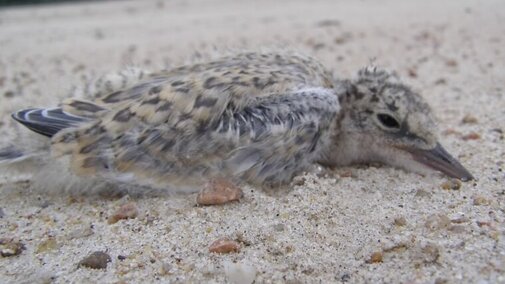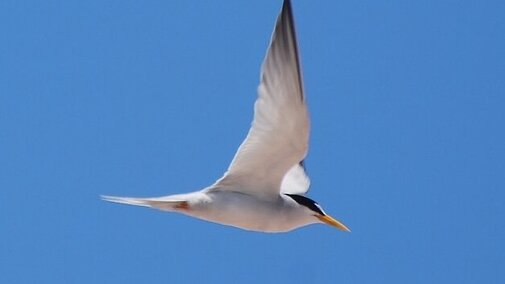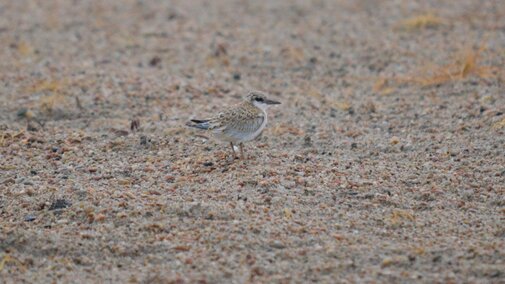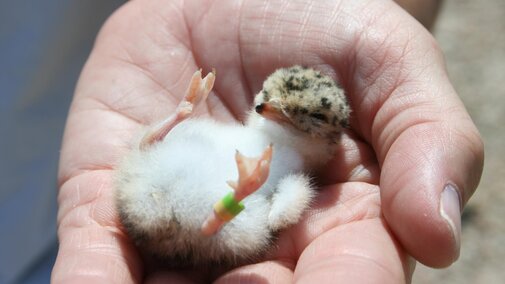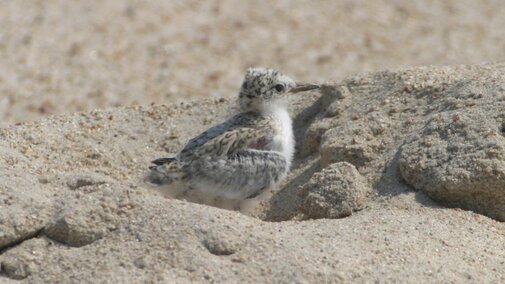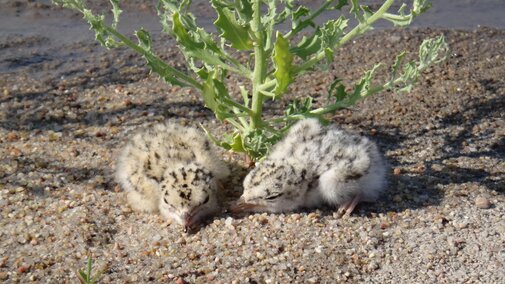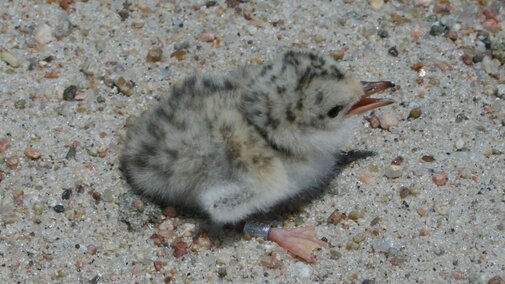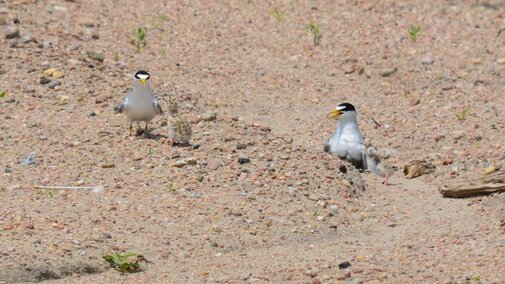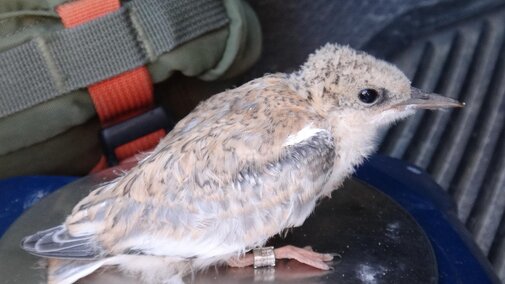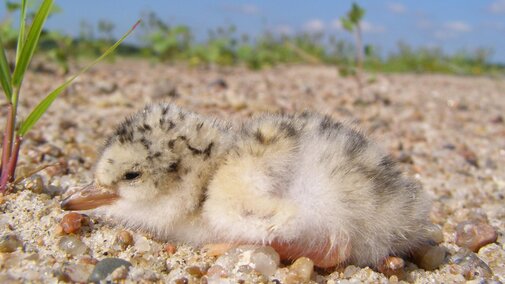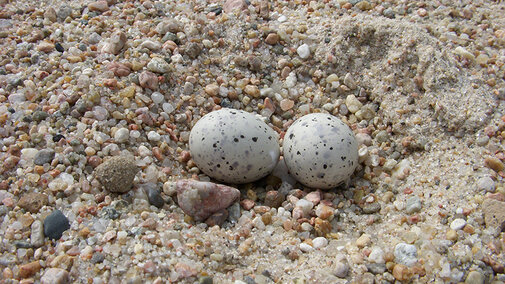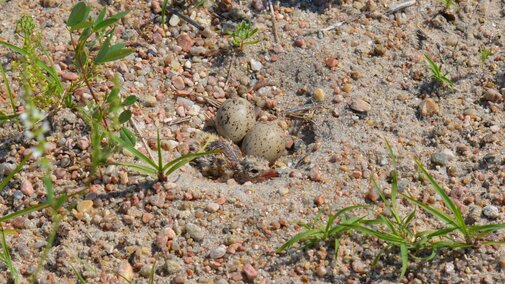Nests:
- nest in colonies
- place nests on the ground in bare sand
- lay 2 - 3 eggs in a small cup-like depression
- produce one per season
- may re-nest up to three times if the nest is lost early in the season
- do not nest until their 3rd summer
- can live 20 years or more (record is 24 years)
Eggs:
- Well camouflaged (pale to tan with dark spots but coloration is highly variable)
- Take about 21 days to hatch
- A little larger than a quarter
Chicks:
- Coloration varies from grayish-brown to yellow to nearly reddish or sandy-brown with white undersides and tiny dark spots on head and back
- Semiprecocial which describes young that have open eyes, down, and are mobile at hatch but don't leave the nest right after hatching
- Typically leave the nest within two days of hatching
- Flightless and depend on parents for food (small fish) and protection until about 21 days
Defensive Behavior
- Adults are aggressive
- Adults defend nest and chicks by mobbing, dive bombing, and defecating on intruders
- Chicks will usually lay flat on the sand pretending to be a rock or they will hide under a plant, rock, or piece of driftwood
Nest and Chick Predators:
- American Kestrels (Falco sparverius)
- Great Blue Herons (Ardea herodias)
- American Crows (Corvus brachyrhynchos)
- Owls
- Skunks
- Raccoons
- Foxes
- Coyotes
- Cats
- Dogs
- Humans
